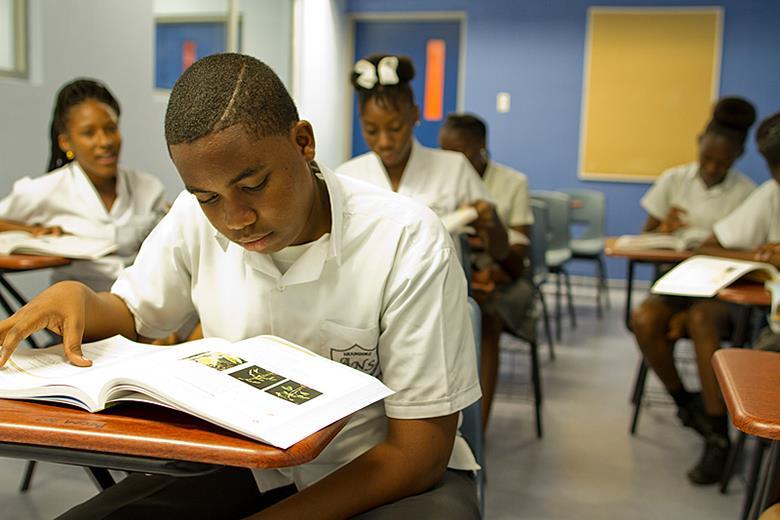Banning Explicit Books Can Be Harmful to Children
Books play a large role in shaping one's childhood.. Whether it be sitting on a parent’s knee or at a desk in the classroom, the books people experience growing up become core memories of the past. Books can come with good and bad, but ultimately, people have the right to decide what is important to take away from their reading experience. However, some schools and organizations these days don’t see it this way. Schools would rather censor, or ban, material they deem as unsuitable and take the choice away from children. It’s fair to want to shelter children from overtly crude material, but the banning of certain books tends to go a bit far. Schools fail to realize the negative consequences of hiding books such as creating a less engaging classroom, restricting the rights of students, and providing an outlet for discrimination.
According to the American Library Association, “Books are usually challenged with the best intentions – to protect others, frequently children, from difficult ideas and information.” While schools may find a variety of reasons to challenge a particular book, PEN America states that 22% of books banned in the 2021/2022 school year include sexual content. Republican politicians, such as Texas Governor Greg Abbott, have been leading voices in the movement to remove mentions of sex from school libraries. Mike Morath, Education Commissioner of Texas, states that the movement is “of great importance to families of Texas public school students.” While authority figures have the right to have a say on the issue, their lack of connection with a genuine classroom environment leaves them uninformed. Putting yourself in the position of a student consuming this material or a teacher willing to share it gives a stronger perspective on the issue.
This issue has been around longer than some may think. In earlier classroom settings, students may have been assigned to read a classic – F. Scott Fitzgerald’s The Great Gatsby. As previous students turned the pages to learn about devices used to advance the plot, they become absorbed by a story of love, tragedy, and the American dream. Despite any potential infatuation with this riveting novel, the earliest attempt to ban this book began in 1987. Following this, there have been multiple attempts to remove this book across American schools. The urgency to remove this book is caused by the sexual affair briefly described between two characters. Despite all the potential this book holds to advance a classroom, a short mention of sexuality takes it all away. Today’s children are experiencing an identical crisis. The versatility of an English curriculum should not be undermined by sexual content within the books. Instead, children should utilize their skills to consider why the content is relevant to the central theme, which will help them become better, more observant students in the long run.
The need for book freedom in classrooms goes deeper than the personal judgement of a student or teacher. From a government perspective, it is absurd to hide any material from students in a public-school setting. In a country where amendments are central to our values, a violation of freedom of speech should not be allowed in classrooms. Regarding the banning of books, the National Coalition Against Censorship states, “Access to a wide range of views and the opportunity to discuss and dissent are all essential to education and serve the school’s legitimate goals to prepare students with different needs and beliefs for adulthood and participation in the democratic process.” Whether or not you agree with the material in the books, the material ultimately has the right to exist. This is especially the case if, as stated before, the material advances the quality of the classroom and offers a valuable lesson in the realm of literature.
Removing these books can have even more harmful effects on the wellbeing of students. The same PEN America report showed that 41% of banned books in schools include LGBT characters and representation. When giving examples of books that contained “pornographic” content, Governer Greg Abbott mentions the book In the Dream House by Carmen Maria Machado. Machado’s book follows her story being stuck in an abusive relationship with her same-sex lover. While the book educates students on both queer identity and the signs of an unhealthy relationship, some schools ultimately believe it is dangerous to expose students to LGBT stories. In a New York Times article titled “Banning My Book Won’t Protect Your Child,” Machado elaborates on the importance of helping children understand themselves within her novel. Regardless of views on same-sex marriage, the bottom line is that students should have the right to access the material they believe is suitable for them. Censoring a book such as In the Dream House may lead to more harm than good when children lack an outlet to learn about a potentially dangerous situation.
While it may be parental instinct to control what children are exposed to, it’s okay to let them have a say. If a child says they are interested in reading The Great Gatsby, it would be more reasonable to encourage them and help them expand their reading skills rather than tell them the book is too inappropriate. Parents are allowed to draw the line on how appropriate a book is, and there are several genuinely pornographic books that may make children uncomfortable. However, when the references to sexuality simply tie into the main idea or a major plot point within the novel, it’s unfair to tear that book away. Whether the book helps them gain knowledge by offering a challenge or helps them feel comfortable with their own identity, it is best to make sure they have a secure outlet to express themselves.

Comments
Post a Comment